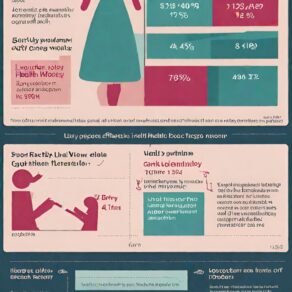Introduction:
In the realm of healthcare, comprehensive coverage is essential for ensuring the well-being of individuals. For women, access to healthcare extends beyond check-ups to include crucial services like dental care, which significantly impacts overall health. As discussions on women’s health programs progress, it’s crucial to ask: Does the program cover dental care? Let’s delve into this topic to unveil the reality behind dental coverage in Women’s health programs .
Table of contents
- Purpose and Scope
- Covered Services
- Variability in Coverage
- The Importance of Dental Care for Women
- Does Women’s Health Program Cover Dental Care?
Purpose and Scope:
Women’s health programs are designed to provide a spectrum of essential healthcare services tailored to women’s specific needs.
Covered Services:
These programs typically cover a range of services, including preventive care, reproductive health services, screenings, and vaccinations.
Variability in Coverage:
However, the extent of coverage may vary depending on the specific program, its funding source, and regional regulations.
The Importance of Dental Care for Women:
Overall Well-being:
Optimal dental health is crucial for overall well-being, with oral hygiene impacting cardiovascular health, pregnancy outcomes, and conditions like diabetes.
Hormonal Impact:
Hormonal fluctuations during puberty, pregnancy, and menopause can particularly affect women’s oral health.
Does Women’s Health Program Cover Dental Care?
While women’s health programs prioritize addressing a wide array of healthcare needs, dental coverage may not always be explicitly included. In many cases, dental care falls under a separate category of healthcare services, distinct from medical care. Consequently, women’s health programs may not automatically cover dental treatments unless specifically stipulated in the program’s guidelines or regulations.
Program Design:
Some women’s health programs incorporate dental care as part of their comprehensive coverage, recognizing its significance in promoting overall health and well-being.
Funding Constraints:
Limited funding or budgetary constraints may restrict the scope of services covered under women’s health programs, potentially excluding dental care due to cost considerations.
Regional Variations:
Dental coverage in women’s health programs can vary based on regional healthcare policies, state mandates, and available resources. In some areas, initiatives may exist to expand dental coverage for vulnerable populations, including women.
Partnership with Dental Providers:
Collaborations between women’s health programs and dental providers or community health centers can facilitate access to dental services for program beneficiaries, even if direct coverage is not provided.
Recognizing the Integral Role
Proponents advocate for comprehensive coverage, including preventive dental services, routine check-ups, and treatment, to ensure holistic healthcare for women.
The Pertinence of the Issue
As discussions surrounding healthcare reform and women’s health equity continue, addressing the question of dental coverage in women’s health programs remains pertinent.
Inequality in Coverage
While some programs may include dental care within their scope of coverage, gaps still exist in ensuring universal access to essential dental services for women.
Medicaid programs vary by state, but dental coverage for adults, including women, is optional. Some states provide comprehensive dental coverage, while others offer limited services or none at all. It’s essential to check your state’s Medicaid guidelines to determine the extent of dental coverage available.
Dental care during pregnancy is crucial for both maternal and fetal health. While Medicaid covers prenatal care for pregnant women, dental coverage may vary. Some states offer specific dental benefits for pregnant women as part of their Medicaid program or through separate initiatives aimed at promoting maternal health.
Women’s health clinics, including federally qualified health centers (FQHCs) and community health centers, often provide a range of healthcare services, but dental care may not be available at all locations. However, some clinics offer integrated care models that include dental services or partner with dental providers to ensure access to comprehensive care for women.
Marketplace health insurance plans, available through the Affordable Care Act (ACA), typically focus on medical coverage but may include dental coverage as an optional add-on for individuals and families. It’s essential to review plan options carefully to determine whether dental coverage is included and what services are covered.
Several dental assistance programs and initiatives aim to provide affordable or free dental care for low-income individuals, including women. These programs may be offered through government agencies, non-profit organizations, or community health centers. Eligibility criteria and available services vary by program and location.
Dental coverage under women’s health programs may include preventive services such as cleanings, exams, and X-rays, as well as basic treatments like fillings and extractions. Coverage for more complex procedures such as root canals, crowns, and orthodontic treatment may be limited or not included, depending on the program.
Advocacy is pivotal in shaping healthcare policies and enhancing access to vital services such as dental care. Engage with policymakers, community groups, and healthcare providers to promote awareness of comprehensive coverage and push for policy changes prioritizing women’s dental health.
Despite coverage limitations, prioritizing good dental hygiene is crucial for women’s overall health. Consistent brushing, flossing, dental check-ups, a balanced diet, and avoiding tobacco can prevent dental problems across all life stages.





